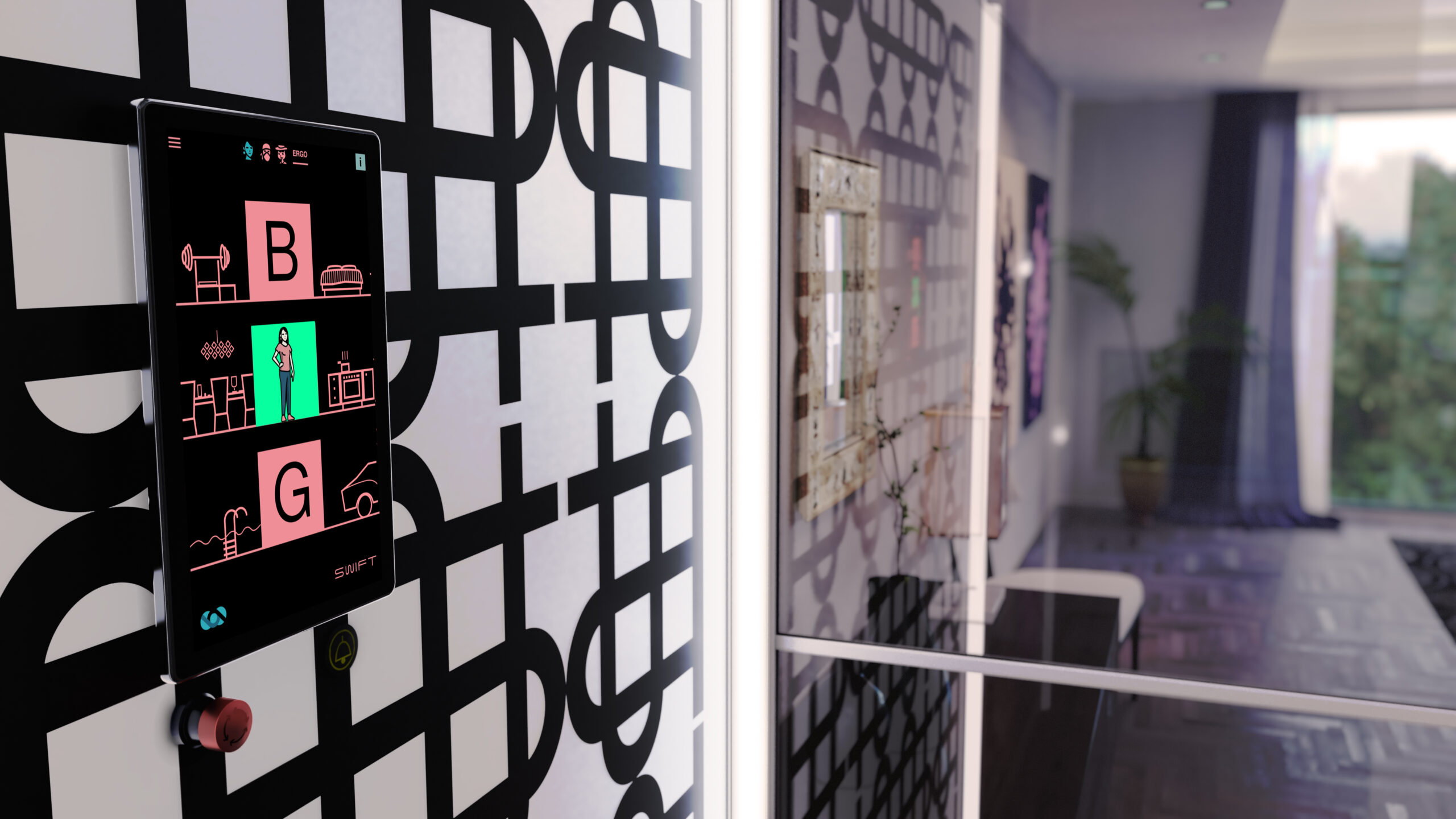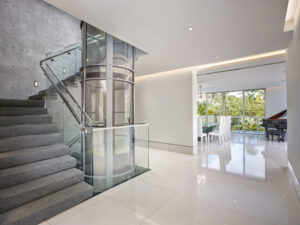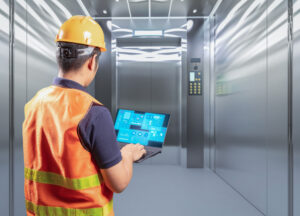Residential elevators
Why choose pneumatic elevators?
Updated: 22-08-2024
The word pneumatic comes from the Latin pneymaticus and this comes from the Greek pneymatikós, which means ‘relating to air’. Today it is used to refer to the technology that uses air to transmit the energy needed by the mechanisms to move and function properly, as in the case of pneumatic elevators. This type of energy is much more environmentally friendly than other conventional energies, since it takes advantage of one of the most abundant resources on our planet: air.
The pneumatic elevator for single-family homes is the only elevator in the world that works with pneumatic force. It is an environmentally friendly elevator without pulleys, grease, pistons and oils, with reduced consumption during ascent and zero consumption during descent.
How does a pneumatic elevator work?
A pneumatic elevator, also known as a vacuum elevator, works by using the difference in atmospheric pressure to move the car up and down. The basic operation of these elevators is detailed below:
Ascent
- Creating a vacuum: To raise the cabin, the suction assembly at the top of the cylinder draws air from the top of the cylinder. This reduces the atmospheric pressure at the top of the cylinder compared to the pressure at the bottom of the cabin.
- Pressure difference: The difference in atmospheric pressure between the top and bottom of the cylinder pushes the cabin upwards, generating the upward movement. It is similar to the suction effect.
Descent
- Controlled air intake: to descend, air is allowed to slowly enter the top of the cylinder. This equalizes the pressure at the top and bottom of the cabin.
- Use of gravity: the cabin descends smoothly thanks to gravity, with speed control provided by air valves.
Main components of a pneumatic elevator
- Outer vertical cylinder: a cylindrical tube usually made of transparent polycarbonate, providing a panoramic view.
- Cabin: the platform or space where passengers travel. It is equipped with rubber seals to ensure a hermetic seal.
- Suction assembly: located at the top of the cylinder, this assembly includes a vacuum pump and a system of valves that control the air flow.
What are the advantages of pneumatic power in our single-family elevators?
- It is ecological: it protects the environment.
- Energy efficiency: being a compressible fluid, it absorbs most of the energy by itself. Pneumatic elevators are considered as another household appliance, connected to the 230V current and do not require three-phase power supply as conventional ones.
- Less expense and consumption: by having a low use of electrical energy, this significantly reduces consumption and, therefore, expense.
- Installation in 24-48 hours: no machine room or pit required, so installation is much faster. It can be easily installed in two days.
- Modern and functional design: this technology allows a much more elegant and avant-garde design, while integrating with the aesthetics of your home. Simplicity and innovation.
- Safety and reliability: the pneumatic elevator has been rated as the safest elevator in the world. Pneumatic elevators for single-family homes have two braking systems: safety and emergency. In addition, in the event of a power failure, the cabin automatically descends to the lower floor, freeing the passenger. It is a “smart” and safe elevator, no trapping!
Is pneumatic power the future of lifting?
Of course… No doubt about it! Pneumatic power is the future and present of lifting. Wolair is the leading brand in Spain in the commercialization of pneumatic vacuum lifts. Its recent arrival in Europe after demonstrating unprecedented success in the USA allows us to offer the latest technology in residential elevators. Our commitment is to provide solutions to accessibility problems within the home to make people’s lives easier.
If you would like to receive more information, please do not hesitate to contact us by calling +34 91 872 56 36, or sending an email to info@wolair.com, we will be happy to assist you without any obligation.




